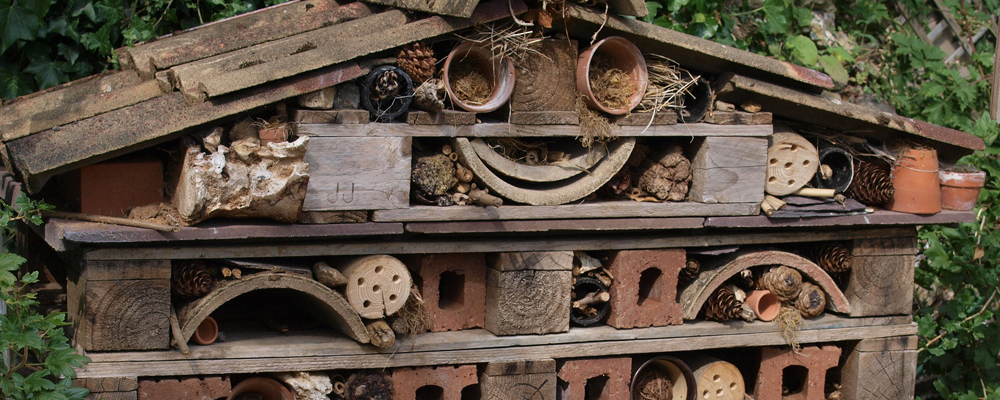Wildlife Gardening Resources
It may seem like a daunting process to start your garden’s transformation into a wildlife oasis but the truth is that you are best working with what you already have. For instance, creating a wildflower meadow in fertile, shady soil won’t do a great deal of good! Therefore, the first step for ANY wildlife garden should be to evaluate the existing wildlife and habitats. Is the area sunny or shady? Open or sheltered? What is the soil like?… and so on.
Questions like this are essential to choosing the best enhancement method for biodiversity, which simply translates as the variety of life on earth. Enhancement can save you time, money and effort so it’s not just great for the wildlife! You don’t even need a garden as a few carefully sourced hanging baskets and climbers can transform a dull wall in a few hours.
The Biodiversity Gardens project aims to give people the skills and confidence to both evaluate their green space and enhance it. This will be through a series of workshops and talks, some of which will be public events while the majority will be tailored to the specific needs of a group. It is our belief that individuals learn practical skills best with practical methods so get in touch with us today to see how we can help you!
For now, here are some useful leaflets on how to start your own biodiversity project:
– Build a wildflower meadow [pdf] to provide a space for wildflowers to flourish.
– Build a bat box so a bat can hibernate through the cold winters.
– Build a butterfly feeder [pdf] to help the butterfly through hard times.
– Build a bird box to give some chicks a home.
– Build an insect hotel [pdf] to attract 100’s of different species and give them a home in your garden .
– Plant nectar rich flowers [pdf] to attract many nectar feeding insects to your garden.
– Make your own bird feeder [pdf] to give birds that extra food to help them last the cold winter.
– Install a bird table to entice some shy birds to eat.
– Install a bird bath because birds need water all year round.
– Build a hedgehog home to give a hedgehog somewhere to sleep.
– Build a toad abode [pdf] to give toads a home.
– Build a pond to attract 1000’s of different species to your garden.
– Make a compost pile or have a compost bin.
– Have a log pile to provide food and shelter to insects like the stag beetle.
– Make a hibernaculum to shelter amphibians and insects over winter .
– Install a water butt to collect rainwater to use on your garden.
A useful and well-informed website is that run by the Wildlife Gardening Forum. You could try their Practical Advice as a start.






